1984 Strachey's List
The Most Consequential Games of All-Time
Strachey’s List is my list of the most acclaimed, consequential, and influential titles of all time. There is a max limit of 20 games per year. As always, this is all my opinion and research.
1942
November 30, 1984 - Capcom / Romstar / Williams Electronics
Yoshiki Okamoto
You are the pilot of a Lockheed P-38 Lightning in the Pacific Theater of World War II, with the goal of taking out the Japanese in one of the most important moments in the war. The game is a vertical shooter with an overhead perspective, which would become a popular genre in the 8-bit era. While Japanese developers developed the game, they chose to focus on the American side of World War II to appeal to the Western market; however, the game proved to be a hit even in its home country, possibly hinting at some of the cultural and historical shifts going on in Japan at the time. The game would be the first of a franchise.
Balloon Fight
September 1984 - Nintendo / HAL Laboratory
Gunpei Yokoi, Yoshio Sakamoto, Satoru Iwata
An early multiplayer favorite, Balloon Fight was a preview of Nintendo’s strength in local multiplayer gameplay. The goal is to float and take out other player’s balloons. In the Famicom/NES version, a sidescrolling stage called Balloon Trip was added where you avoid obstacles. The game is a cult classic for Nintendo fans today and was the start of the Nintendo and HAL Laboratory relationship. Satoru Iwata was a programmer for this game, who would go on twenty years later to become the company’s president.
Boulder Dash
March 1984 - First Star Software / Data East / Mirrosoft
Peter Liepa, Chris Gray
Players play as Rockford, who wants to collect as many diamonds in a cave as possible. You have to dig through tunnels and watch out for obstacles that move when you dig beneath them, mainly boulders that can fall on top of you. Some objects interact a certain way, like butterflies, which explode when hit and become diamonds. This was the first of a series of games.
Deux Ex Machina
October 1984 - Automata DK / Electric Dreams
Mel Croucher, Andrew Stagg
One could argue this is the first “weird game” subgenre that many gamers were accustomed to in the 1990s, as you track the lifecycle of a defective machine that takes on the form of a human being. You experience life from a cell to an old living being. The game goes with a soundtrack of music and narration. Since the original release did not have sound, you had to play a cassette tape that came with the game at the same time as you played. The interesting game went on to bomb despite critical praise, as it was a mail order-only title. It went on to develop an underground art legacy. However, the game began to slowly gain a legacy and become a point of evidence for video games as art. It’s gone on to be included in many lists and books for games you must play.
Devil World
October 5, 1984 - Nintendo / Intelligent Systems
Shigeru Miyamoto, Takashi Tezuka
Developed by Shigeru Miyamoto and Takashi Tezuka, Devil World is a maze game similar to Pac-Man. You play as Tamagon, a dragon in the Devil’s world who takes on minions and must touch crosses and Bibles to get the power to defeat them with fire. You collect dots to clear the stage as the Devil dances across the top of the screen. The game was a hit in Japan and Europe but was never released in North America originally due to his heavy Christian religious contexts. Eventually, it finally came to the Americas through the Nintendo Switch Online Service. This was an important game as it paired Miyamoto with Tezuka, a partnership that would prove pivotal as they worked on multiple games in the decades to come.
Dragon Buster
December 20, 1984 - Namco
Clovis, a young swordsman, goes on an adventure to rescue Princess Celia from a dragon and restore order to the kingdom. The game plays in a set of rounds you take going up a mountain, each with different levels and bosses at the end. When you reach the end, you’ll face the dragon and rescue the princess. It’s recognized as the first game with a health bar and the double-jump ability. One of the first games of a coming boom of fantasy adventure Japanese games, Dragon Buster, would only be released in Japan and Europe. Today, it’s recognized for its groundbreaking gameplay mechanics.
Excitebike
November 30, 1984 - Nintendo / Hudson Soft
Shigeru Miyamoto
Play as a motocross racer through a sidescrolling stage. You’ll have to avoid obstacles such as gaps and rough patches as you drive. It sounds basic today, but it was an innovation at the time, specifically using sidescrolling. The game was a hit as a local multiplayer title in households with multiple kids. This was one of the games that Miyamoto used his experience from making to create some critical decisions in Super Mario Bros.
Hydlide
December 13, 1984 - T&E Soft
Tokihiro Naito
Three magic jewels once maintained peace in the kingdom of Fairyland until an unknown man stole one, breaking the seal of the demon Varalys. The other jewels were stolen later, and the kingdom plunged into darkness, and the princess was transformed into three fairies. The player takes on the role of Jim, a brave knight who sets out to restore the land and take on the demon. Tokihiro Naito made the game with the concept of combining two genres, action and RPG, which would birth the Action-RPG genre. The game is an open-world title as you explore the land and take on monsters during your exploration. If this sounds familiar, it's because it went on to influence titles like The Legend of Zelda and Dragon Quest. Hideo Kojima said it influenced his decisions for the open world in Metal Gear Solid V: The Phantom Pain. It was also the first game to use a recharging health meter, similar to the one Halo: Combat Evolved would use later.
The game was a critical and financial hit in Japan but failed to get the same recognition in the West. Part of this is due to the game releasing later, after titles like The Legend of Zelda, which exposed some aged mechanics or came off to some gamers as just a copy, not realizing it came first. It also suffered from jokes made due to using the same song in the game constantly, with some calling it the “It’s a Small World” of video games. Luckily, the game’s legacy is much better today, and you can’t deny its importance in the industry.
I, Robot
June 28, 1984 - Atari
Dave Theurer
The first real-time 3D polygonal game, through rasterization and not vector graphics, you play as a rebellious robot fighting to destroy Big Brother. You must turn squares from red to blue to remove the shield and eventually destroy Big Brother. During its initial launch, the game didn’t get the best reviews for its gameplay but was lauded for its graphics. Atari didn’t have many cabinets for its release, as it was an arcade-only title due to its technology. Today, it has a better legacy and is in many wishlists for arcade cabinet collectors, which is a big deal due to the small number of units available.
Karate Champ
May 1984 - Data East / Technos Japan
Karate Champ is a two-player karate match in which players try to land a move to win a round. You play with a dual joystick setup and can hit 24 possible moves. It was a major hit, especially in the United States. It inspired the 90s boom of martial arts-based fighters, titles like Street Fighter, Mortal Kombat, Killer Instinct, Tekken, and more.
Knight Lore
November 1984 - Ultimate Play the Game
Chris Stamper, Tim Stamper
One of the Sabreman games, you play as the Sabreman as you look for a cure to your werewolf curse in a mysterious castle and collect objects, avoid obstacles, and explore. It uses a monochrome art style, and the player has to watch out for a day and night timer, as you become a werewolf every night, and some creatures attack you when you are transformed. You have forty days to complete the potion for the cure. Considered a consequential game for the British game industry, Knight Lore has been praised for its use of 3D isometric graphics, gameplay mechanics, and atmosphere. It was one of the many games that would put the Stamper brothers into gaming history.
Kung-Fu Master
November 24, 1984 - Irem / Nintendo (NES Port)
Takashi Nishiyama / Shigeru Miyamoto (NES Port)
A beat-em-up title inspired by Bruce Lee’s Game of Death film, you play as Thomas, who climbs a tower called The Devil’s Temple to rescue your girlfriend. You'll fight minions and progress through the five floors to get to the top and complete your mission. Another innovator and inspiration in this year’s list, the beat-em-ups, would become a staple of the 8-bit era. While I usually focus on the original releases of games on Strachey’s List, I did want to point out that Nintendo themselves worked on the NES port, and it was done by Shigeru Miyamoto. He used his newfound knowledge working on this port to create some of the scrolling effects and mechanics for Super Mario Bros.
Marble Madness
December 1984 - Atari
Mark Cerney
Help guide a marble through a course, avoiding obstacles along the way, and beat the time limit. Created by future architect of PlayStation 4 and PlayStation 5 Mark Cerny (as well as known for his soothing ASMR-like voice), Marble Madness was a bit of a technical marble (pun not intended) at the time. Cerny originally had high expectations for the technology he wanted to use but settled on isometric to tackle technological limitations. The game was a commercial hit and is a cult classic today.
Pac-Land
October 29, 1984 - Namco / Bally Midway
Tsukasa Negoro
With Pac-Man fever taking hold of pop culture, Namco released a game based on the Hannah-Barbera cartoon of its iconic character. Pac-Land puts the character in a sidescrolling adventure rather than the typical maze game we’re used to seeing him in. You’ll go through various levels and settings as you find items and fight ghosts. The game was a technical accomplishment for the company, and its cabinet technology would power future arcade titles.
Pitfall II: The Lost Caverns
February 17, 1984 - Activision
David Crane
Following the success of Pitfall!, a sequel was approved and released in 1984. You are Pitfall Harry once again as you explore Machu Pichu. There’s more story this time, as your goal is to rescue your cat and niece. The gameplay is similar, though some past mechanics, like swinging from vines, are not. Like the original, it was a commercial hit, although, to this day, many think of its predecessor when you mention the franchise.
Sabre Wulf
1984 - Ultimate Play the Game
Chris Stamper, Tim Stamper
In another Sabreman title, you control the character through a maze to collect amulet pieces to get past the guardians. The game does not tell you much, wanting the player to figure things out through trial and error. Early PC players fell in love with the game, and it received some awards and high review scores. The colorful jungles and art style were the game's most notable praise. Considered one of the best games on the Spectrum console, it was an influential title in the British games market and another early step for the Stamper brothers.
The Tower of Druaga
June 1984 - Namco
Masanobu Endo
Another early Action-RPG title, you play as Gilgamesh, a golden knight set to climb the 60 floors of the titular tower to take on the demon Druaga and rescue a maiden. The game uses the maze game mechanics for every floor as you go floor by floor and take care of enemies or complete tasks to continue. The game was a massive commercial success but did receive some critical pushback due to high difficulty. Sequels and spin-offs did come after, but this original title is the more important and consequential as it influenced future titles such as The Legend of Zelda and Ys.
Wild Gunman
February 18, 1984 - Nintendo
Shigeru Miyamoto, Hiroshi Imanishi, Gunpei Yokoi, Makoto Kano
Initially a 1974 electro-mechanical game, Nintendo set out to do a remake as a video game. It’s simple enough as you are part of an old West-style duel and must fire when the screen flashes the phrase. It also contains a shooting gallery on saloon windows. The game has gone to be seen in some pop culture references, including a brief scene in Back to the Future Part II. This would be the start of Nintendo’s use of remasters and remakes to keep their old titles alive and reintroduce them to younger generations.
Wrecking Crew
July 26, 1984 - Nintendo
Satoru Okada, Gunpei Yokoi
Control Mario as you take down obstacles, pillars, and concrete walls with a large hammer as you avoid enemies. With one of the best soundtracks of the 8-bit era, Wrecking Crew’s popularity has only grown in recent times. The game has been referenced and featured in future Nintendo titles, including Super Smash Bros. Today, the game is remembered for its unique game play for a Mario title, and its catchy theme music.
Be Nice to All



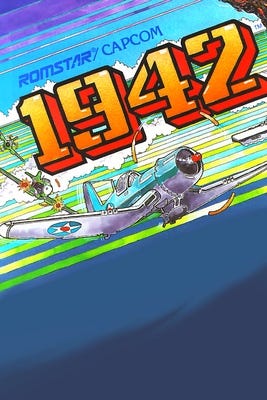



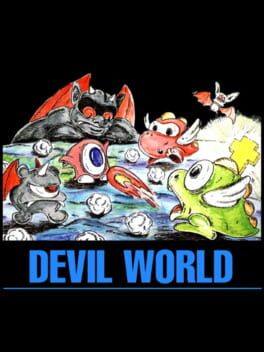
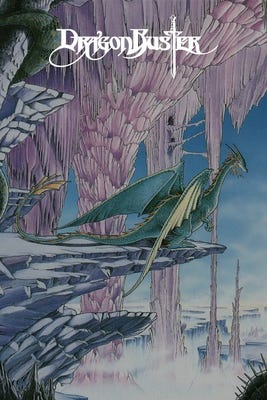

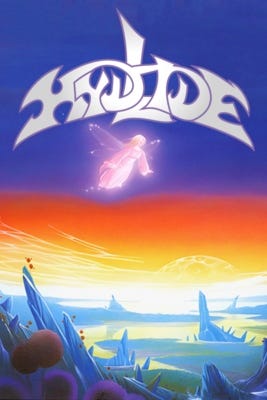
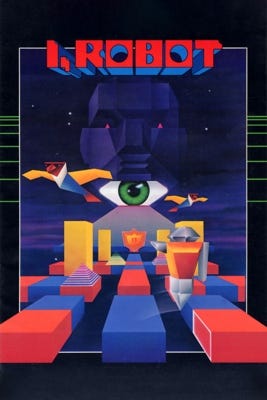
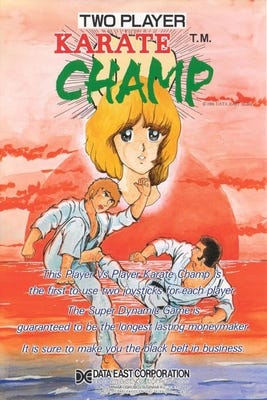
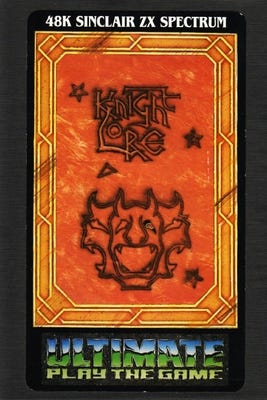

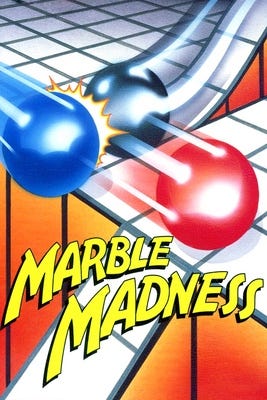
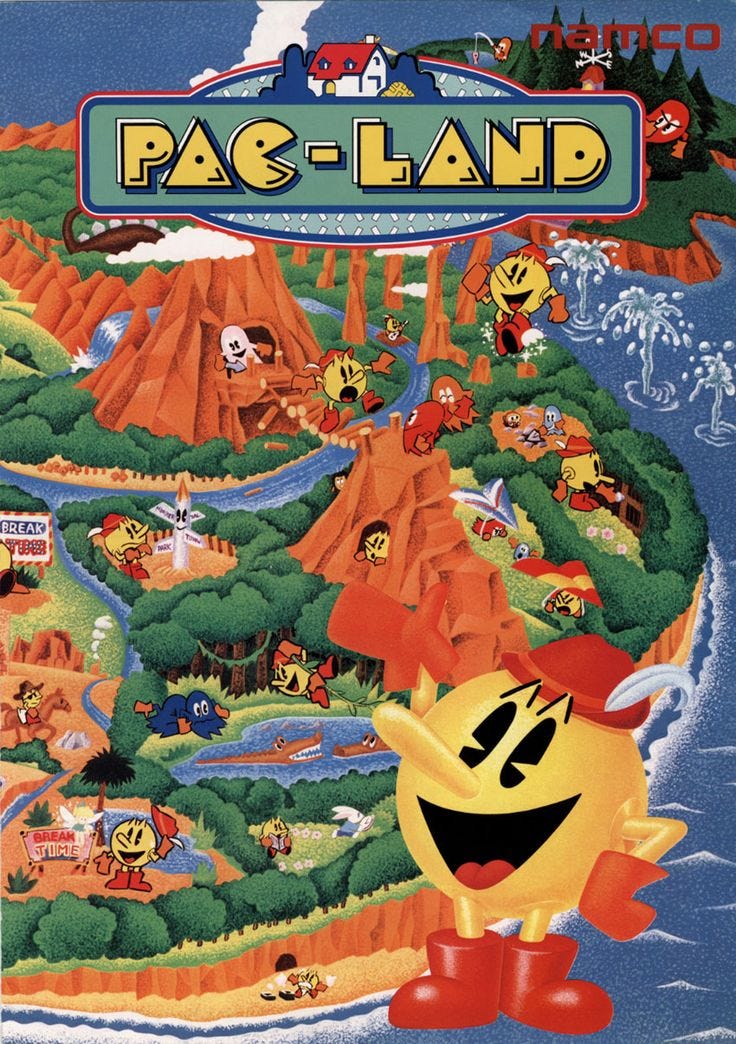

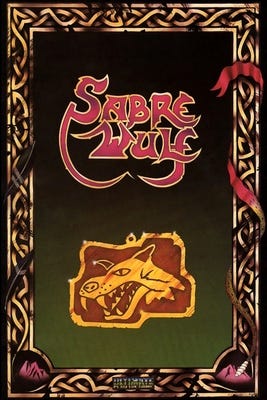

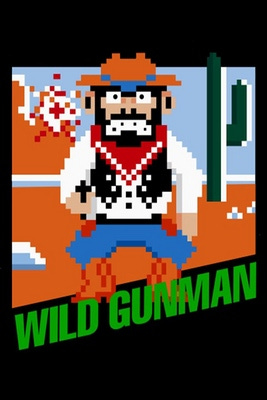
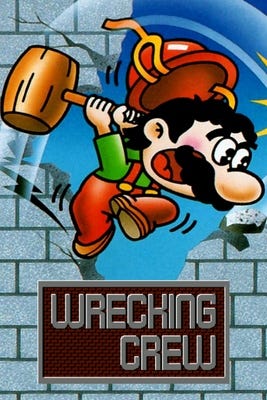
Another list full of bangers. Deux Ex Machina is one I haven't heard of. I dig its weirdness and that it came with a cassette soundtrack. Gonna have to check it out.
I keep meaning to ask. Who is Strachey?